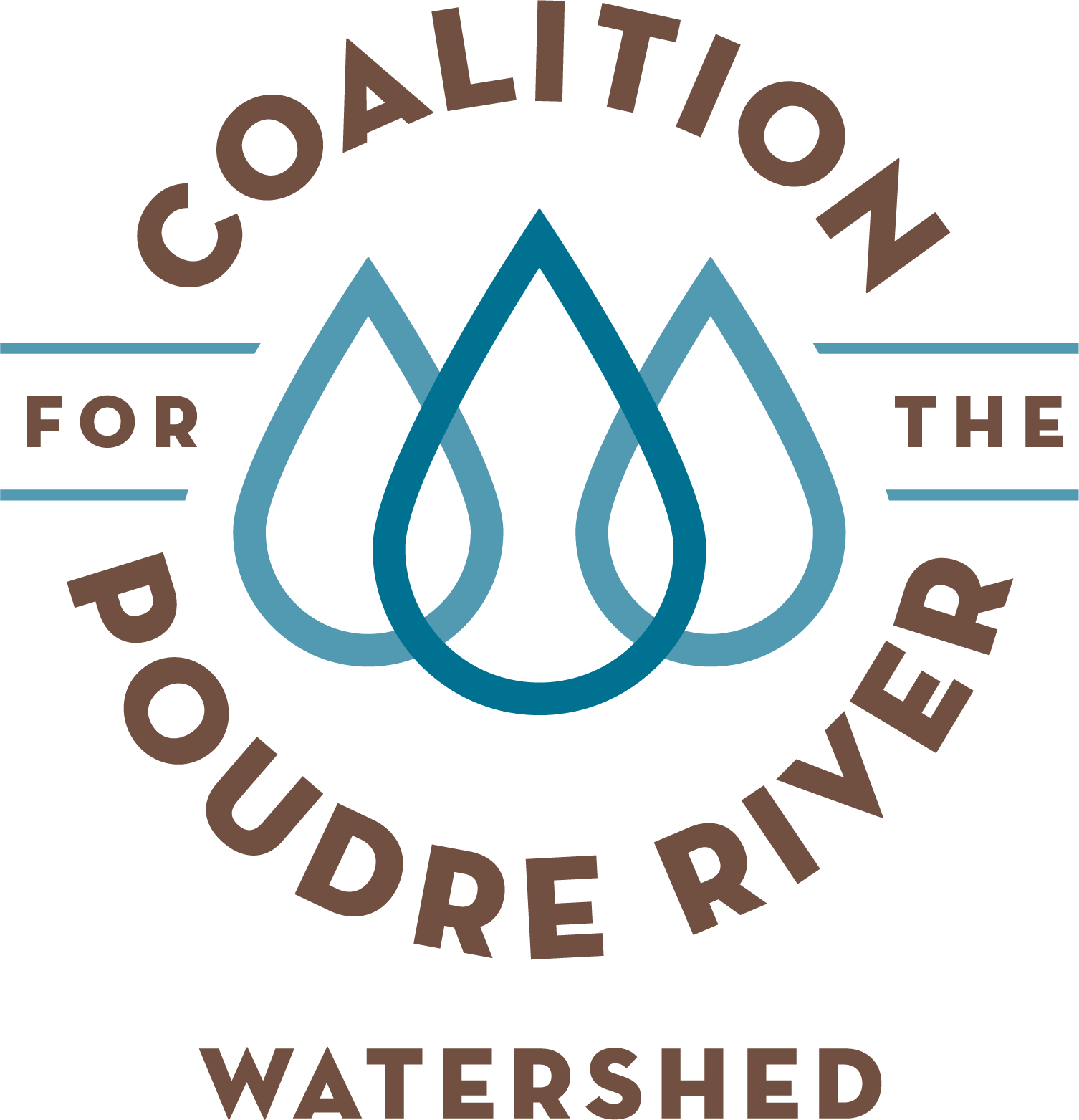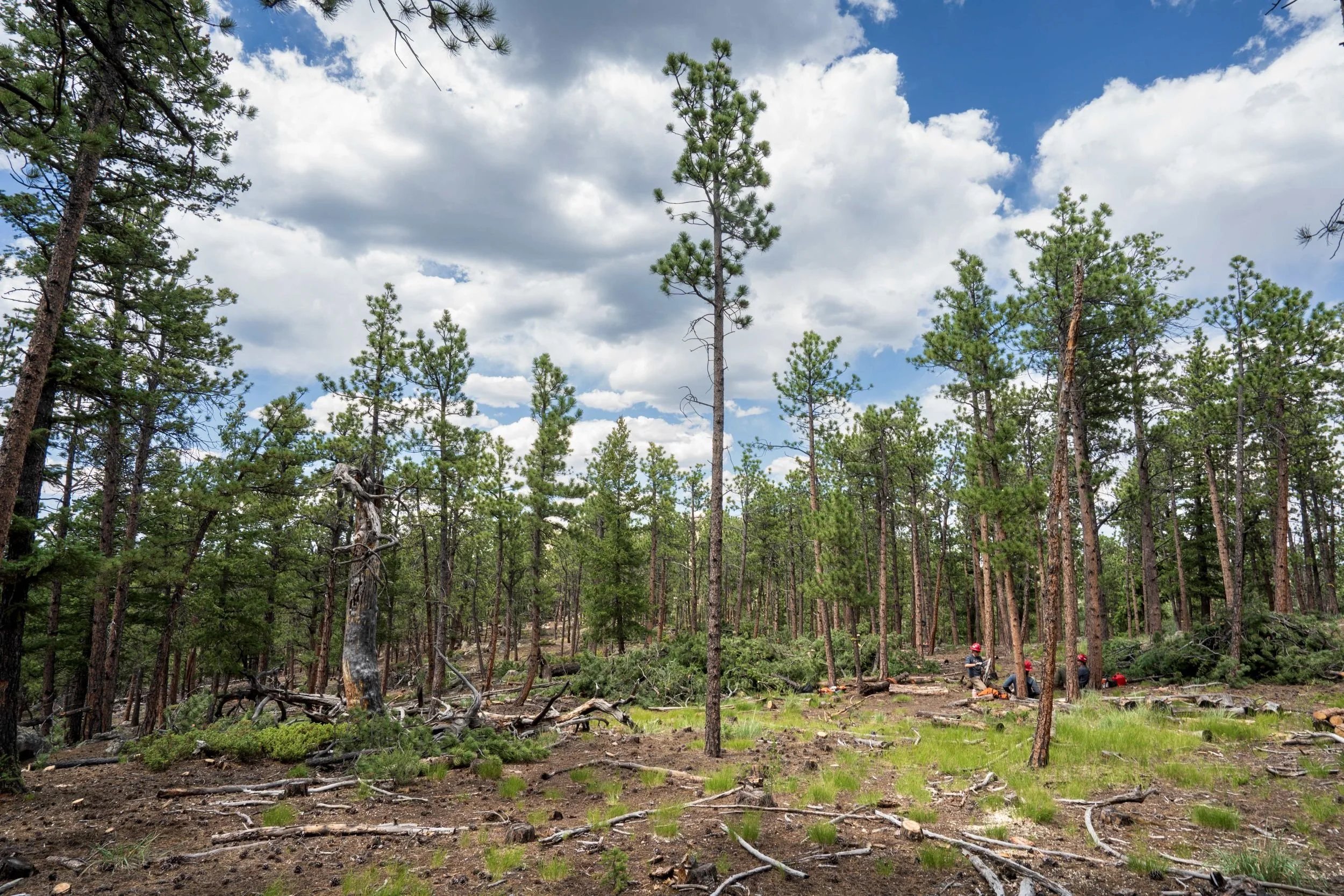Stand-Scale Treatments
Red Feather Lakes Area Wildfire Defense Project
Overview of Stand-Scale Treatments
Windy Gap Wildfire Mitigation Project (Photo credit: Evan Barrientos Photography)
A main outcome of the Red Feather Lakes Area Wildfire Defense Project is the reduction of hazardous fuels, restoration of fire-adapted ecosystems and creation of fuel breaks through wildfire mitigation treatments in open space, along roadways and on private properties. This grant will support the treatment of up to 800 acres of community open space and larger private parcels.
Stand-scale forestry treatments are practices applied to a single forest unit to improve its health, structure, and composition. These treatments include activities like thinning to reduce competition and promote growth, removing unwanted or defective trees to free up resources for high-value trees, and prescribed burning to manage vegetation and reduce wildfire risk.
Wildfire mitigation treatments will be planned and implemented in community-owned open space and on larger private parcels throughout the 4 current CWPP focus areas. All treatments will be prioritized, starting with the highest risk parcels, following CWPP fire modeling and treatment prioritization recommendations. Treatments will follow RMRS-GTR-373 for prescription development in community-owned open space and in home ignition zone 3 of larger private parcels.
Goals of stand-scale treatments
Reduce risk of large, high-severity fires
Boost stand resilience to disturbances and climate change
Protect people, ecosystems, and key services
Increase spatial diversity (openings, tree groups, individuals) to support fire and biodiversity
Retain old trees, snags, downed wood, and other legacies for wildlife and complexity
Conserve rare species to support biodiversity
Maintain or increase native wildlife diversity in ponderosa pine and mixed-conifer forests
Types of Forest Treatments
Hand Thinning: primarily undertaken to remove small diameter trees (sometimes called ladder fuels) from stands that are too dense.
Mechanical Thinning: involves using heavy forestry equipment to greatly reduce tree densities across all size classes, and increase the size and frequency of forest openings.
Scales for Front Range forest restoration, beginning with the broad landscape scale (100,000 to 1,000,000+ acres; e.g., HUC-8 watersheds) within which local landscapes occur (1,000 to 100,000+ acres; e.g., HUC-12 watersheds). Stands or treatment units (1 to 100+ acres) occur within local landscapes. Multiple stands or treatment units may make up a project area (not pictured). Source: Principles and Practices for the Restoration of Ponderosa Pine and Dry Mixed-Conifer Forests of the Colorado Front Range (RMRS-GTR-373)
Resources
Principles and Practices for the Restoration of Ponderosa Pine and Dry Mixed-Conifer Forests of the Colorado Front Range (RMRS-GTR-373)


